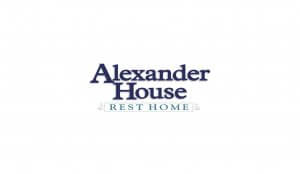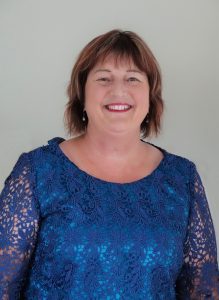Posts
HCSL has been a game-changer for our organization!
Having a unified system that streamlines employment processes, enhances clinical documentation, and improves governance oversight has made a huge difference in efficiency and care quality. The fact that it has led to better audit results and freed up more time for resident care is the biggest gain for me.
I have experienced other systems over the years, HCSL is the simplest, easiest and most user friendly one yet.
Keep up the great work team.
Kind Regards,
Sheryl Lilly, General Manager
Scovan Healthcare Ltd.

“HCSL has been incredibly easy to navigate since we went live on the system on the 1st of October. Our team have people with varying levels of technology literacy and the ease of this system has meant that staff are more confident to use technology and see how it can help to improve time management by not having to double or triple up on written documentation.”
Manager
Alexander House Rest Home

Boards of any organisation should be well placed to provide strong and transparent governance. This means the members of the board all need to understand the organisation structure, strategy, finances, client base, market changes and employees for the context in which they are operating. This includes knowledge of behaviours, culture and ethics. The behaviours of all organisational board members gets reflected in employees to set the culture within the workplace which is experienced by the clients and those advocating for them, their family/whanau and friends.
The skill of judgement is necessary for board members to base decision-making on a set of agreed standards or a clearly defined constitution, organisation vision/mission or philosophy. To have a progressive Board, there is the need to recruit board members with greater skills than already exist within the board. This ensures progressive diversity of thinking and culture based on more than gender and ethnicity. A greater diversity is needed to also include creativity, innovation, current commercial practice knowledge, information givers and information seekers to increase depth of conversation and concepts being explored. The Board member profile could do well to include these attributes, abilities and skills. Collectively they need to advance the organisation purpose, vision/mission or philosophy in a way that meets client current and future needs.
Boards are not the place for the faint-hearted or those at the end of career who simply ‘want to give back’ who may base todays decisions on yesterday outdated models. Diversity will become a more visible part of boards with the introduction of the new Health and Disability Service Standards later this year. While they are currently in draft, it seems clear the final version will require more diversity within boards. This will include increased desire for Maori representation and inclusion on Boards. As American diversity advocate and activist Verna Meyers says, “Diversity is being invited to the party, inclusion is being asked to dance”.
If Maori representation isn’t part of your board make-up, it may be advantageous to look at forming relationships with local Iwi who fit the attributes needed to fit your board member profile. All Board members will need to be available, ethics driven, commercially aware and able to contribute. The Board Chair will need to show these same attributes and also provide consistent innovative, clearly communicated strategic leadership. The Board as a whole will also need to be agile in their response to unplanned events. 2020 and the emergence of COVID-19 reminded us of this. It appears 2021 and into the foreseeable future will also present the need for agile thinking and innovation. I suggest now is the right time to review how your board is made up and how effectively they perform. How can this be improved in your organisation?
As a RN, Facility Manager and Consultant in Aged Care I have used various Aged Care software packages over the years.
Feedback I have received from RNs and caregivers using HCSL system includes the following:
- Takes less time to find information about residents
- More resident focused and less task focused than using tick box task lists.
- Able to edit information quickly.
- Easy to upload and save information in the documents folder.
- Easier to do monthly quality analysis as the information is quicker to find.
I am very impressed with HCSL software as I have found it delivers in the following ways and is:
- Intuitive and timesaving – the software prompts the operator – for example to create a short term care plan if documenting an adverse event such as wound care. The one click action means less time taken trying to open a new screen or change functions such as finding care plans or progress notes.
- Quality Assurance is able to be maintained in a timely and comprehensive manner with an internal audit system and corrective action logs in addition to monthly analysis of adverse events and infections.
- NZ ARC compliance requirements are continuously updated – in care
planning, and resident information requirements documentation and procedures and policies in the individualised Facility Documentation library.
- Very responsive service- the HCSL team quickly respond to questions and seek and use client feedback to continuously develop and extend the software capabilities. HCSL is New Zealand based so information is relevant to nursing and care giving in New Zealand.
- Developed and managed by a very experienced NZ Nursing leader in aged care who has comprehensive knowledge of and experience in quality and compliance systems in NZ aged care.
Anne Sheard, RN.

We have been working with Gillian and Healthcare Compliance Solutions Ltd (HCSL) for more than 4 years.
Compassion, quality of care services and their drive for excellence inspired by the quest for excellence in care put Gillian and her team at HCSL in a league of Its own.
In the ever evolving science of aged care, HCSL systems and aged care software program has proven itself not only as a world class quality health system but also demonstrates that it’s person centred and current best practice. It is designed and developed based on scientific evidence to ensure the delivery of best quality of care and supporting best quality of life to all our clients.
The inclusive, consultative and the facility specific approach of Gillian and her team is absolutely outstanding with constant follow up on changes. These include new improved plans to ensure the best quality of care, practices and bench-marking incorporating the latest best practices, outcome based, with the main focus on quality of care and safety for our residents and staff at all times.
Using HCSL and all the quality services it provides ensures we are up to date with the latest policies and procedures relevant to the current care practices. It also gives us peace of mind that we are audit ready at any given time.
Based on these systems, our residents are cared for in the best possible way resulting in the high demand for our care services and Holly Lea being a highly sought after facility.
For peace of mind and knowing you are dealing with the best quality system in Healthcare we cannot recommend HCSL highly enough.
Juliane Brand (RN, MPH)
General Manager
Holly Lea Village – Generus Living Group

Thanks so much for the help at Rosewood. You did a fantastic job.
I have four facilities using HCSL. I have been impressed with HCSL. I frequently access it from home and on my phone. Because remote access is via the internet it enables me to interchange between HCSL and the medication chart easily unlike other systems that require remote access in via Citrix which “takes over” the computer. Log in is secure but quick.
Residents are easily searched for and once a file is open it immediately directs me to produce a new progress note. Care planning functions are easy to review and there is a simple tool for medical classifications with common conditions in a drop down list with room for free text below. On the whole this is an easy tool to access and one of the less cluttered programmes I have used.
Dr Hillary Currie-Gray
Christchurch
I was first introduced to Gillian Robinson of Healthcare Compliance Solutions Ltd (HCSL) in 2016 when I took up the Facility Manager position at Terrace View Retirement Village.
The facility had HCSL in place but were not fully utilising Healthcare Compliance Solutions policies. The first thing to do was to get Terrace View fully operational under Healthcare Compliance Solutions. Gillian was very supportive during this change providing education to myself, Clinical care manager and our team.
HCSL aged care software is easy to find your way around. Our Nurses have reported that care planning in HCSL is saving them time. Everything is in a logical order.
Features that make my role easier are the ability to track trends in adverse events and infection control. To be able to bench-mark our data within the industry to see how we are trending against our peers.
Terrace View is very excited to be moving to HCSL aged care software version 2 so we can become fully electronic. To be able to search a file or document from the computer saves all the team time.
Gillian’s knowledge of the aged care industry and how the sector works is reflected in the software she has developed and is designed to increase nursing team efficiency in a very time restricted environment.
Donna Coxshall
Facility Manager
18th February 2020
This month we look at the discussion around whether mandated staffing levels in aged care, as a ratio of care hours to residents, would improve care services?
Rather than numbers of personnel alone, to provide safe and appropriate nursing services, staffing skill-mix (taking into consideration the workforce diversity) is essential to ensuring appropriate effective staffing. These factors are not taken into account or provided for within the industry funding levels which puts additional pressure on those working in aged care services.
While performing statutory (temporary) management roles over past years, adequate numbers of staffing alone hasn’t guaranteed safe and appropriate care. Nursing outcomes for residents have been reliant on a mix of highly skilled staff working in conjunction with newer or less experienced staff to guide and mentor. There could be 10 staff on duty but if none of them have had previous experience working in aged care services, these staff are set-up to fail in performance of their duties, and the resident care outcomes are likely at risk.
SNZ HB 8163:2005 – ‘Indicators for safe aged-care and dementia-care for consumers‘ is a national document which includes formulas for staffing levels based on acuity of residents. This document set industry guidelines and although not mandated, defines staffing from a best practice perspective. Numbers alone as already mentioned are not sufficient.
Outdated for the acuity of residents needs in 2019 and onward, the 2005 guidelines didn’t take into account a range of factors. For example the size and physical layout of the facility, location of resources, the leadership structure and how work teams are configured, economy of scale and appropriate cover. The minimum staffing requirements in the ARRC is well below that sufficient to meet resident needs. Having been implemented in 2005 (SNZ HB 8163:2005) when resident needs were less complex than they are now, it’s well past time to review how staffing skill-mix is determined and more importantly how the industry will be funded for increased staffing to meet the increased needs of residents.
HCSL developed a 5 step acuity assessment tool in response to providers requests after being frustrated by using the two tier InterRai assessment which give outcomes of resthome or hospital level of care. InterRai doesn’t reflect the range of acuity represented in SNZ HB 8163:2005 from a care level perspective. As reported by numerous registered nurses working in aged care, the complex clinical presentation of residents being admitted into care is not accurately reflected in InterRai which is why they still need to supplement InterRai at times with more detailed clinical assessments.
Achieving desired outcomes for residents and the timeliness of appropriate care support based on individual assessed needs should be the aim for the allocation funding to ensure adequate staffing levels.
Contact Info
+ 027 601 6400 (Director)

